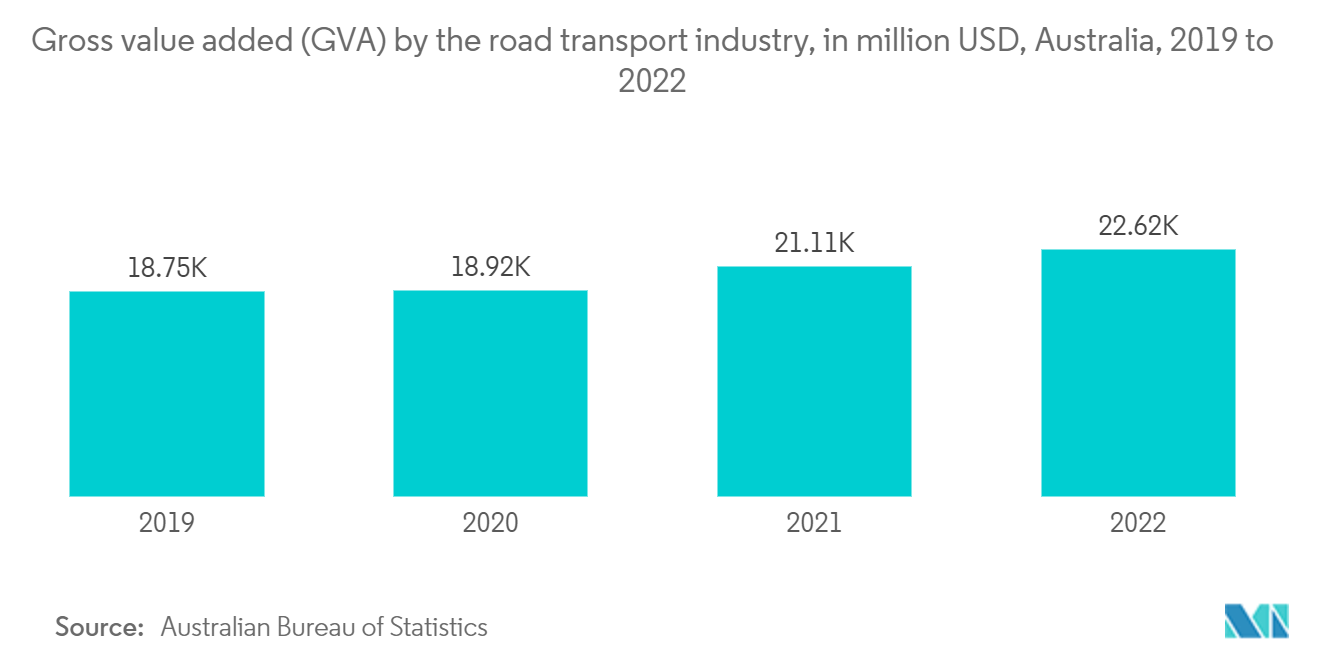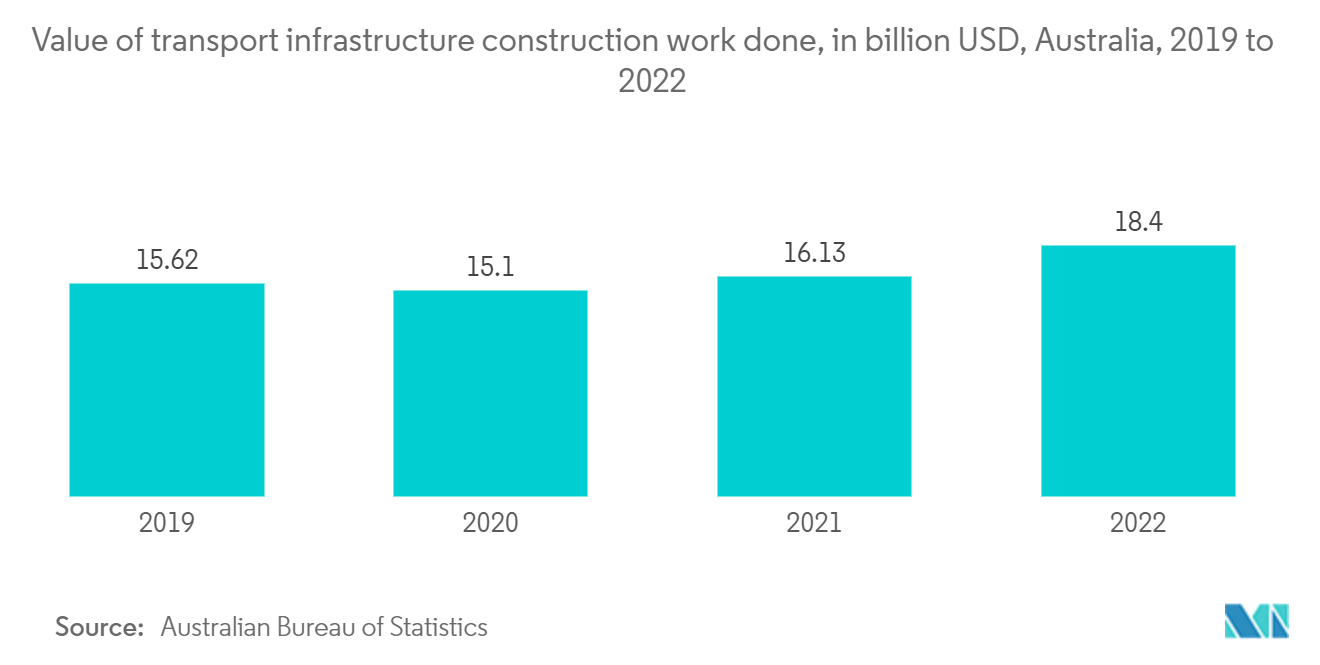Market Trends of Australia Freight Forwarding Industry
Bulk Freight driving the market
The volume of freight transferred by railway throughout Australia decreased, with just 2% of products currently transported by rail between Sydney and Melbourne. It is due to concerns about pollution and safety problems generated by the increasing number of vehicles on highways. Rail remains a popular form of transportation for mining and resource firms throughout the country. According to figures from the Bureau of Infrastructure and Transport Research Economics (Bitre) for 2021-22, strong private investment in tracks resulted in 72% of bulk goods. The goods included iron ore, coal, and other commodities, being transported domestically by rail, compared to 12% transported by road.
However, trucking gained significant traction in the transport of non-bulk freight. It is a large category that includes meals, beverages, vegetables, mail, manufactured goods, and most other commodities. Trains carried 16.7% of domestic non-bulk freight by 2021-22, while vehicles carried 79.8%. Coastal shipping also declined dramatically, from over 13% in the mid-1970s to less than 4% now.
Given the reduced cost of freight in contrast to other sources of high-CV coal, Japan, South Korea, and Taiwan are important customers of high-CV Australian coal. While imports fell year on year from January to September 2020 due to the pandemic, shipments of Australian coal to those nations increased significantly at the same time in 2021. Japan bought 82.3 million metric tons of coal from January to September 2021, with Australia accounting for 59.5 million metric tons.

Increasing Investments On Infrastructure
Australia includes a robust pipeline of initiatives financed by the public sector. There are substantial road, rail, airport, energy, and social infrastructure projects planned in our main cities and along critical freight and transit corridors in Northern Australia. The government budget for 2022-23 pledges AUD 17.9 billion (USD 12.13 billion) over ten years to significant infrastructure projects around the country, including billions for road and rail projects. Between 2021 and 2025, total investment in major public infrastructure is estimated to surpass AUD 218 billion (USD 147.67 billion). The AUD 16.8 billion (USD 11.38 billion) WestConnex 33 km traffic freeway in NSW, scheduled to open in 2023, is one of Australia's greatest infrastructure projects. It also includes Sydney Metro, the country's largest public transportation project and the nation's first fully automated metro train system.
The Australian government's collaboration with the governments of New South Wales, Victoria, Queensland, Western Australia, South Australia, Tasmania, the Northern Territory, and the Australian Capital Territory is expected to help different land transport infrastructure projects. The Australian government will spend AUD 110 billion (USD 74.51 billion) on land transport infrastructure across Australia over the next ten years, from 2021 to 2022, via its rolling infrastructure pipeline, with the majority of the funds coming from the infrastructure investment program. This program is part of the government's bigger goal to decrease traffic congestion, enhance regional connectivity, solve the national freight problem, get Australians home quicker and in safer conditions, and create a stronger and more resilient Australia.

